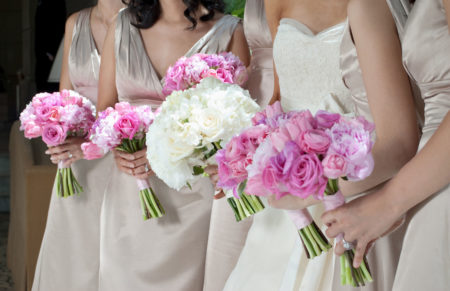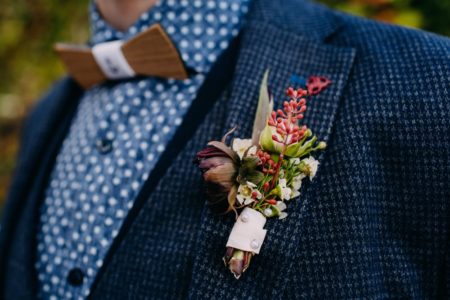In this day and age of personalizing even the most sacred of traditions, it’s important to know where our traditions come from in the first place. As you learn more about the background and history of a particular wedding tradition, you may find it important to keep in your wedding- or to do without. Either way, the wedding experts at Conklyn’s Weddings are eager to share the origins of some of the more common traditions you’ll find at weddings. You can decide how you’d like to include or update these to suit your style.
The Bridal Bouquet
The bouquet carried down the aisle by the bride represents her beautiful style, personality and sometimes even a favorite flower shared between her and her groom. But the very first bridal bouquets were comprised of herbs, garlic and grains meant to ward off evil spirits intent on ruining the couple’s big day. Eventually, the herbs and garlic were replaced with flowers that can mean many different things depending on the culture and couple. You may choose to carry flowers like the ones your partner brought you on your first date, or the same beautiful roses your grandmother always grew in her garden. Whatever your reason for your choices, we- and your wedding guests- hope you bypass the garlic this time.

Your Bridesmaids
The tradition of surrounding yourself with ladies dressed in similar gowns dates back to Ancient Rome, when it was believed that dressing the same as the bride would confuse evil spirits. If the evil spirits couldn’t tell which lady was the bride, she had a better chance of being left alone so she and her new husband could be married in peace. Today, bridesmaids are typically close friends who are standing up with you as you make your vows, promising to love and support you in your marriage. And while they traditionally wear matching gowns, even this tradition has become more modernized to allow for different styles in the same color or even in complementary colors to present more flattering designs for each bridesmaid.
The Sweet Flower Girl
The sweetness of a young girl dropping rose petals along the aisle before the bride walks was not always the intent of this tradition. In Ancient Rome, young girls would walk the aisle before the bride with sheaths of wheat to invite well-being and good fortune to the newlyweds. Eventually the sheaths of wheat were replaced with flowers, and the petals that are dropped before the bride’s entrance. Today many brides still follow this tradition, though it can be altered to add special meaning to your day, or removed altogether if you like.
The Little Ring Bearer
In medieval times, the rings were brought to the ceremony by a page in the king’s court. By Victorian times, the ring was placed on a pillow as a sign of wealth and prosperity (pillows were a luxury item, so using one to present a ring was quite posh). Today the bride and groom might choose a young nephew or close friend’s son to bear the rings on a pillow specifically for the occasion. For a modern twist, some couples choose to have their favorite pet dog bear the ring, or simply omit this step altogether and let the best man hold on to the rings.

The Groom’s Boutonniere
Today a groom’s boutonniere typically matches the bride’s bouquet, tying the look of the wedding party together. But in medieval times, a man wore a flower on his lapel as he went into battle to show that his woman was supporting him from afar. She might give him a sprig of her favorite bloom to remind him of her before he left, and he would wear it to show he was clearly adored and supported. Usually the color of the flower matched the colors worn by the woman, leading to the tradition of “wearing a lady’s colors.” Nowadays, men’s boutonnieres can take on many different forms, from jewelry to succulents or anything that expresses his favorite interests.
The idea of keeping ancient traditions alive is a noble one, yet it’s important to recognize changes and the modernization that occurs with traditions over time. Many traditions can be updated to suit your specific style, and others might be worth keeping. You may also choose to maintain certain traditions that were honored in your parents’ and grandparents’ weddings, keeping family traditions alive. At the end of the day, your wedding should feel like yours. All of the choices you make will lead to a unique look and feel that expresses your own style and personality. For more insight about wedding traditions, talk to the wedding professionals at Conklyn’s Weddings. We’ll be glad to share our expertise and knowledge with you as you decide which traditions to keep and which to modernize.
